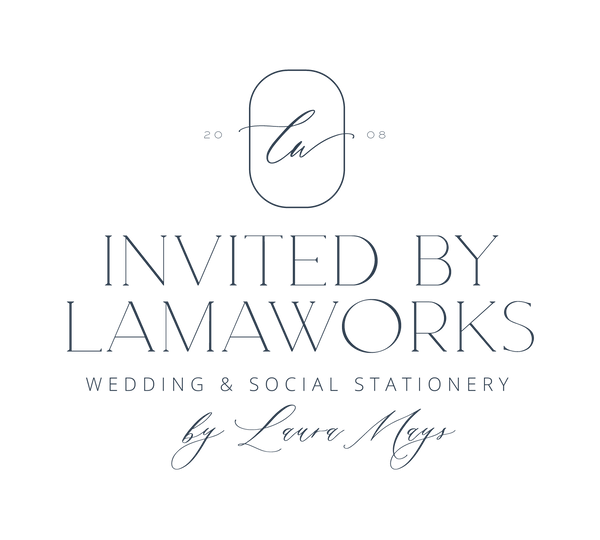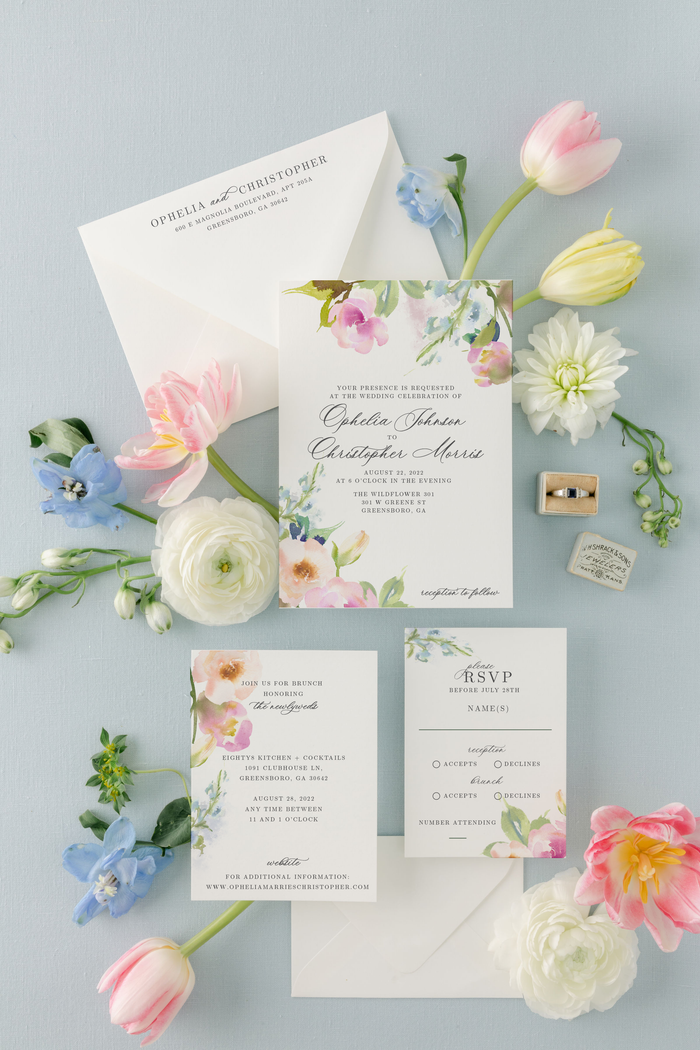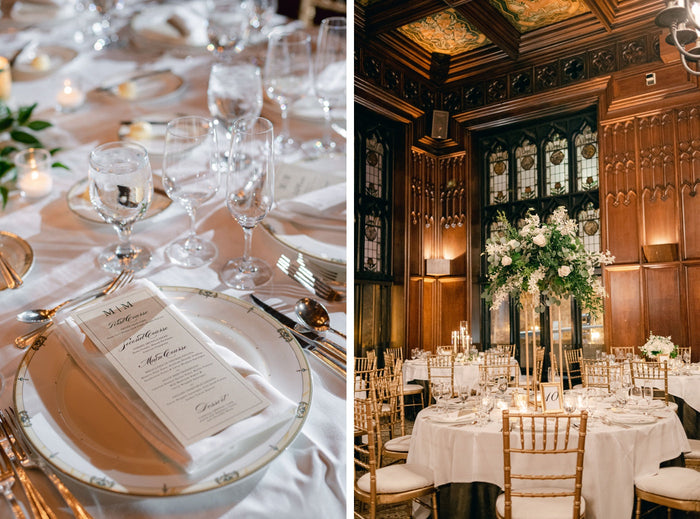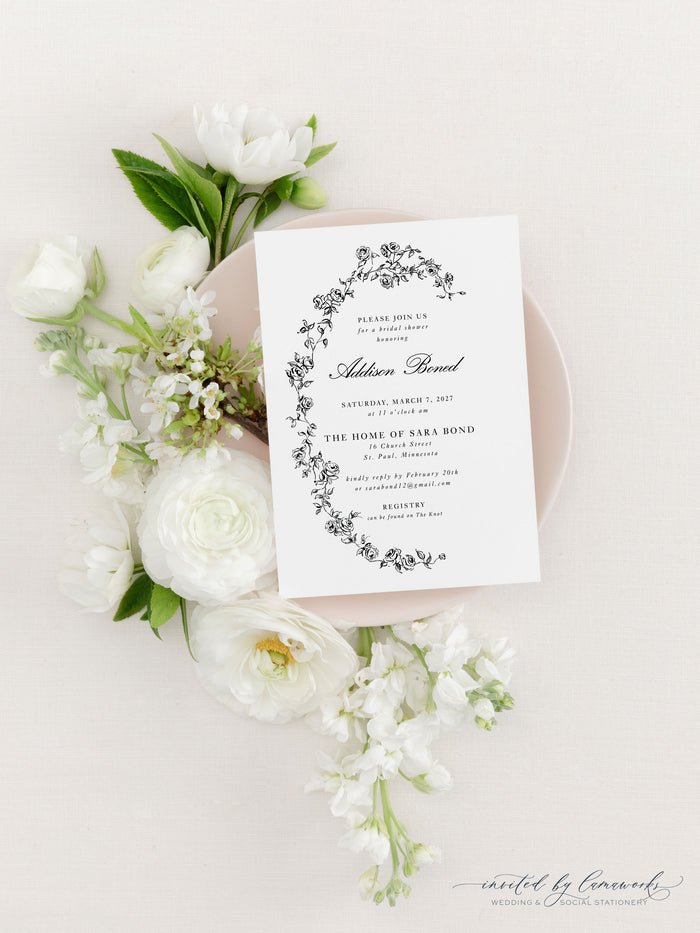Printing Techniques Explained

So, last week we talked about different ways to customize your stationery right?! There is so many ways to be creative in that area and make every fun idea that you have come to life.
One thing that often comes up a lot is printing technique. From basic to formal - how you print says a lot about your style. Digital printing, letterpress, embossing, gold foil …. Seems like a whole new language, right? Each of them has it’s own unique characteristics, we just have to figure out which one is right for you! So, let me help a little.
Digital Printing
Digital printing is the most common type of printing and the least expensive. It uses a high end laser printer to transfer color to your paper. It is smooth to the touch and has an endless array of color options. Contrary to popular belief - it doesn't matter if you are printing all color or black and white, the cost varies by your page size.
While you can use any color paper, keep in mind that the colors get absorbed into a color, so if you want to use, say orange on kraft paper - that orange will be quite muted on the page. To keep your colors vibrant, use white or ivory paper.
Digital White
Digital white is newer to the industry. In olden days (or a few years ago!) when you wanted to have white lettering on a gray page, you would use white paper and essentially put down a gray box and white text. So the front would look like gray paper with white ink, but the back of the paper would be white - faux white lettering.

Not anymore my friends! Now they have a laser printer that has a white toner so you can actually use a colored paper with true white ink. It looks stunning and isn't too much more expensive than traditional digital printing.
Digital Metallic
This technique is super brand new to the industry. Similar to digital white, it uses a laser toner fit with either metallic silver or metallic gold toner cartridges. It is a really nice alternative to foil if foil is out of your budget. Use it alone on white or dark paper or mix it with traditional colors for a pop of something special. {I'm working on a metallic gold and red plaid holiday party invite right now that I can't wait to show off!)

Thermography
Thermongraphy is always classy and traditional. Do we have any crafters out there that make their own stamped cards??? Have you tried embossing? You stamp your image, shake a clear powder on the image, then use a heat gun and watch it bubble up for a raised texture.

Same idea here. Your design is printed using a laser printer, a powder is dusted on while that is still wet and then heat is applied to cause the raised texture. It gives your paper a very distinct look and high end feel at a moderate cost. You can use either one or two colors in this process.
Screen Printing
Screen printing is a technique that uses a woven mesh with an ink blotting stencil to create your desired image. Each color is applied one at a time and you can layer up to 3 colors to your design. Each color requires a new, custom screen to be built, so the more colors you use, the higher your cost will be.

The inks that are used here are opaque, so screen printing is an excellent choice if you want to use light colors and have them print vibrantly onto darker paper.
Letterpress
We are starting to get to the big guns here - the more artisan printing methods. Letterpress has been around since the 15th century and was once the only printing method available. Back in the day - letters were hand selected and placed onto a bracket. Ink was carefully applied and you pulled a lever to push that text into the paper.

Today, more modern methods apply, but they still use the same machines from the late 1800s. In my dream of dreams I will one day own a vintage letterpress machine.
But I digress. Today, I can design your invitation or stationery set and send it off to the letterpress printer. They take my design and turn it into a polymer plate. Your design is raised up on the plate. They place the plate on the machine, ink is mixed by hand and spread onto the press rollers. All of this is done by hand to ensure that they find the fine balance between too little and too much ink. The machine pulls the paper in and presses the design into the paper.
It is beautiful and amazing, and oh so complicated and hands on. It's expensive, but worth every penny of it if you can afford it. The larger your order, the cheaper it will be. If you think you want to have stationery for life, you can have a plate made and every time you need more stationery pay for small runs - making the plate is a large part of the cost so it saves you more over time.
This method can use either one or two colors. For a really awesome tutorial, visit Oh So Beautiful Paper and their interview with Boxcar Press (http://ohsobeautifulpaper.com/2012/01/the-printing-process-letterpress-printing/)
Embossing and Debossing
This method is very similar to letterpress printing, but without the ink. It uses the same plate making method to either push down into or up out of your paper to create a 3 dimensional, colorless design.

Foil Stamping
Again, this is a very similar method to letterpress, however with the addition of foil. Rather than using ink, the plate has foil placed onto it which is then heated and pressed into your paper. A wide variety of metallic shades are available.

If you want just small accents in foil, you do also then need to run it through a digital printer to get other colors, so the price can get much higher here.
But how are big box stores offering foil at prices that are much more affordable than what I can? Look at their designs. You will likely notice on invitations that the foil is used for accents - swirls, patterns, or graphics. They can likely have 10,000 of those made, then just print your information as each order comes in. Sadly, I can't afford to do that yet, so each of my runs will be custom until I can find one fantastic design that sells like hot cakes!!
So there you have it! Printing methods 101 - which do you love?





0 comments